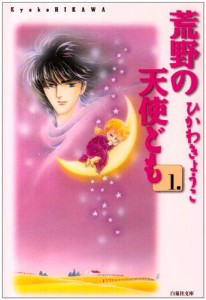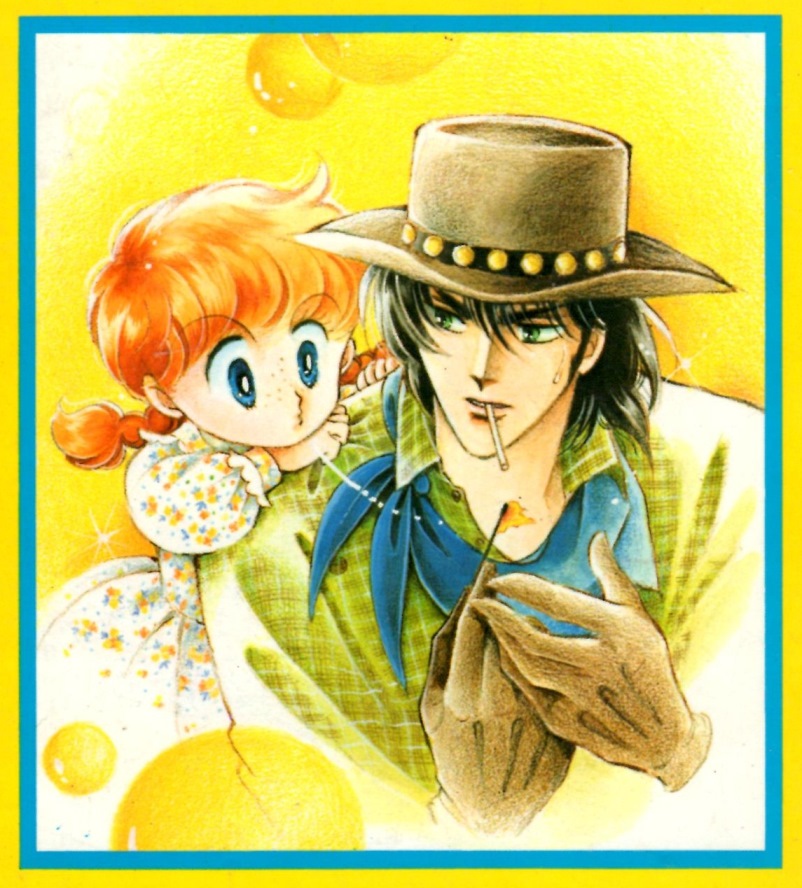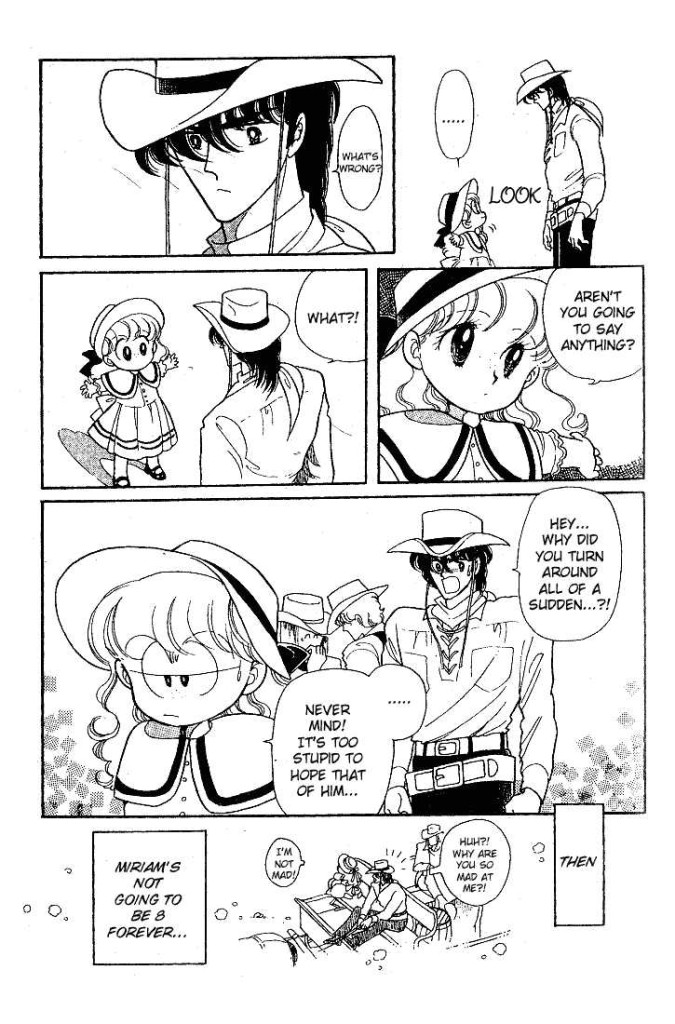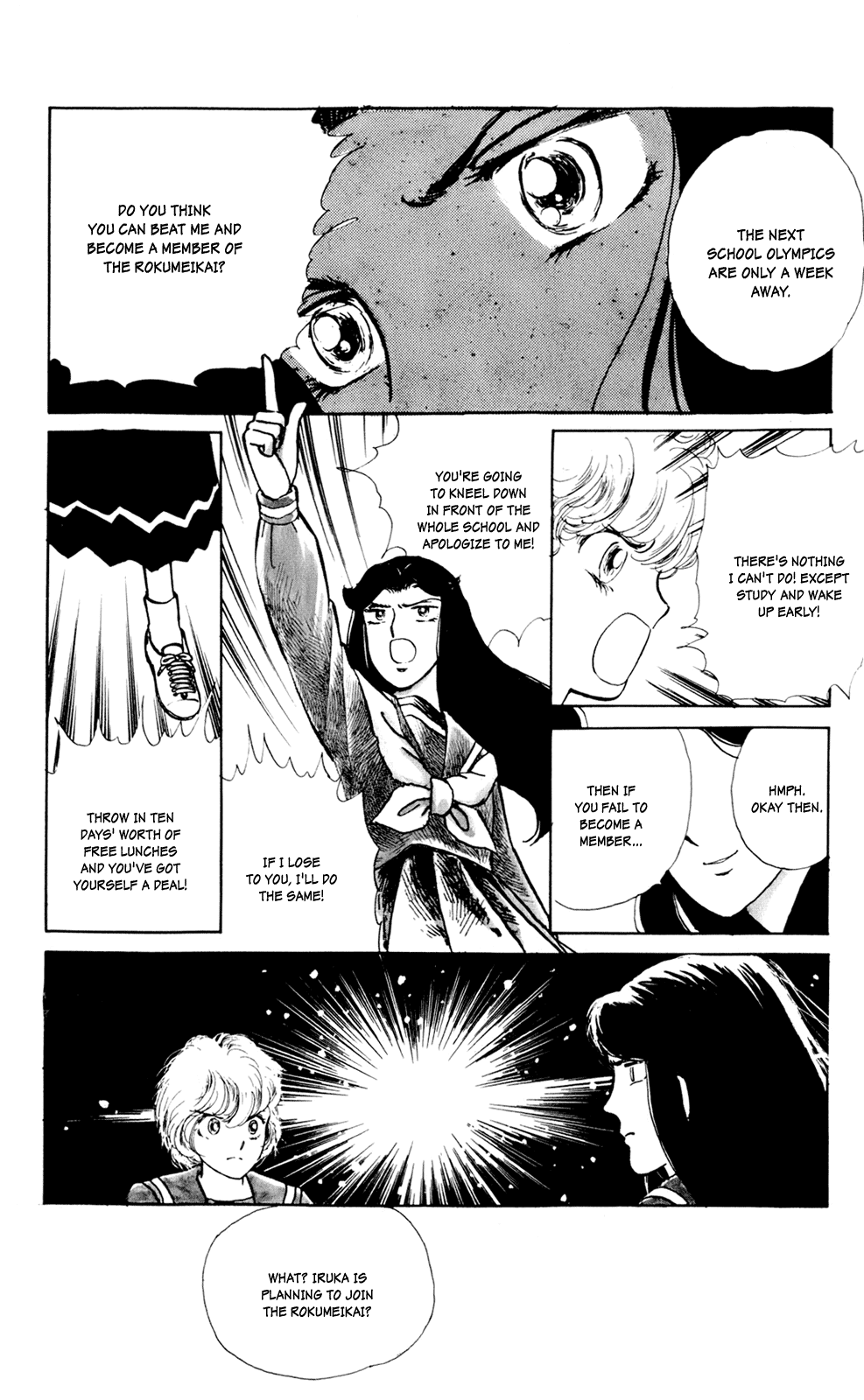If you read enough shoujo, you might have come across a manga named “Miriam” by Kyoko Hikawa. If you do a little digging around, though, you will realize there is no such manga named Miriam in Japanese. The fan-translators took three series: Kouya no Tenshidomo, Jikan wo Tomete Matteite and Sorenari ni Romantic, wiped out their titles and renamed them all Miriam after the main character.
That’s why you’ll see some places list it as a 7-volume manga, even though it’s actually 3 for Kouya (or two if you buy the bigger Hakusensha edition), 3 for Jikan and 1 for Sorenari. MangaSync did a good job with the translation and editing otherwise, but this was a really unnecessary, unwise and uncalled for change on their part, so I hope other fan groups never followed suit.
Now that we’ve got that all cleared up, what is Miriam Kouya no Tenshidomo all about? It’s a shoujo manga set in the Wild West that follows the adventures of a plucky, precocious 8-year old named Miriam as she tries to protect her beautiful adoptive mother Grace from the attentions of the slimy, cowardly Mr. Harnbag.
 At least that’s the manga Kyoko Hikawa set out to write, but then her mistake was introducing three young men first, Card, Joel and Douglas, and having them do the bulk of the work in getting things done. Hikawa set out to make a manga with a strong female character who was also a child, and I still think it could have been done, but she wrote the story in such a way that the guys had no choice but to take center stage with Miriam playing a mainly supporting role – or even getting in the way through her stubborn recklessness – and Grace being all but completely useless.
At least that’s the manga Kyoko Hikawa set out to write, but then her mistake was introducing three young men first, Card, Joel and Douglas, and having them do the bulk of the work in getting things done. Hikawa set out to make a manga with a strong female character who was also a child, and I still think it could have been done, but she wrote the story in such a way that the guys had no choice but to take center stage with Miriam playing a mainly supporting role – or even getting in the way through her stubborn recklessness – and Grace being all but completely useless.
But that’s okay, as long as the manga is good. Is it? Well it has a lot of things going for it. The unusual setting for a shoujo is one. I haven’t read much manga set in the Wild West, much less shoujo, so that’s a start. The child heroine in the midst of adults is also quite rare. They usually tend to be paired with other children.
Kouya no Tenshidomo also has a fair amount of action without actually being violent. This is a bit of a spoiler, but deaths are extremely rare, even in situations where you would expect there to be a few deaths. Obviously the good guys want to avoid becoming murderers, but the bad guys seem to have inexplicably bad aim while also managing to avoid hitting any innocent passersby. Thanks to that the manga manages to have a very feel-good atmosphere to it, which I like.
The art is neat but nice-looking. Nothing too special, and I did think Hikawa could have done more with the backgrounds and signs and stuff to make the series seem more “Wild Westy” but it turns out she was sick for a while when she wrote it so I guess she did her best. Either way the action is easy to follow, the story is short and well-told – this is the bad guy, these are the good guys, here’s what we’re gonna do. It’s a short satisfying experience and well worth the read for people who like unusual shoujos.
Except! The fly in the ointment! Spoilers follow for romantic developments…
The relationship between Douglas and Miriam starts too soon! She’s only 8 years old, for goodness’ sake! I can buy an 8-year old having a crush on an older teen, but WHY ON EARTH is he falling in love with her at that tender age? She’s 8, and she’s drawn even younger!
But she’s 8 years old now!!
Stop that, you pedo! So there were a lot of really creepy scenes with Douglas thinking about how much he wanted to see Miriam and vice versa and on and on and on. It made the 2nd and 3rd volumes a little uncomfortable to read because I was just thinking “Help!! Police!!” all the time.
At least the two sequel series Jikan wo Tomete matteite and Sorenari ni Romantic deal with Miriam and Douglas’s relationship at a more sensible age. It’s not the age gap that’s the problem, after all. It’s that she’s only 8 years old!!! I think the author had been reading too much Thorn Birds when she wrote that subplot in. Please don’t write anything like this ever again, Kyoko Hikawa, kthxbye.
Long story short, Kouya no Tenshidomo is a short, light read as long as you don’t mind that the lead male is a pedophile. It’s still a nice change from the usual (the rest of the manga is a change from shoujo series I mean, not the pedo hero being a change from non-pedo heroes) so give it a try if you get the chance.





